Anogia or Anogeia of Mylopotamos in Rethymno is a Large town and municipality of Mylopotamos district. It is 55 km from Rethymnon and 35 km from Heraklion. Anogia is built on the northern slopes of Psiloritis, at an altitude of 750 m. and have 3,500 inhabitants. The village of Sisarcha also belongs to the municipality of Anogeia. In the administrative district of the municipality is the Plateau of Nida (Kambos tis Nida). Close to Nida plateau is the cave “Ideon ‘Andron” also known as Cave of Nida or Arkesion.
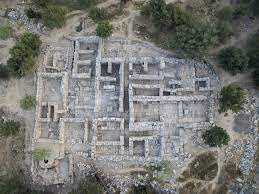
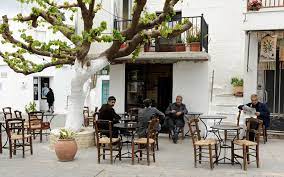
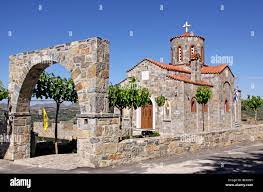

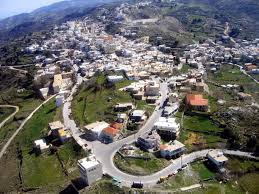
The region of Anogia was granted to the Fokades – later Kallergides. Then it may have taken the name Vasilika Anogia, because they belonged to royal lords. According to the above, the fact that in some documents Anogia is also called Vasilika Anogia – in the poem of Marinos Tzane Bunialis, in which the Cretan War (1645-1669) is narrated, is also justified.
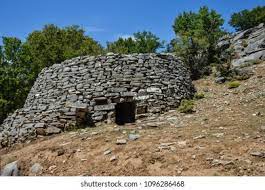
The Anogians are genuine Cretans. Older families are the Aerakis, Andreadakis, Vitoros, Vistis, Vlatas, Vogiatzis, Vouidaskis, Brentzos, Gryllos, Dakanalis, Diamantis, Dramantakis, Kalentis, Kavvos, Kakoudakis, Kalergis, Katsamanis, Karabinis, Kalomiris, Kafatoi, Kefalogiannis, Klinis, Kokosalis, Konios, Kontogiannis, Kontokalos, Kounalis, Koutantos, Koutentes, Koutentakis, Magoulios, Manioros, Manuoos, Manouras, Massaoutis, Mavrokostas, Mavrogiannis, Memos, Minadakis, Bageris, Berkis, Brindalos, Dayantas, Derzis, Niotis, Xetrypis, Ximeris, Xylouris, Pasparakis, Passas, Pappadios, Patramanis, Pataris, Pleuris, Plousis, Roditis, Roulios, Saloustros, Samolis, Sbokos, Skandalis, Spachis, Skoulas, Spithouris, Stavrakakis Stratakis, Sykiotis, Stamatis, Soultatos, Sfakianakis, Spyridakis, Tsagarakis, Toupis, Troulis, Fasoulas, Frisalis, Hachliotis, Chroniaris, Hairetis.
Most of the inhabitants are engaged in animal husbandry and less in agriculture. Also, most of the female population is engaged in weaving. Textiles are also exported. Anogia has emerged as a center of Cretan folk handicrafts. The inhabitants grow olives, vines, vegetables and produce Kefalotyri, Graviera, Anthotyro. The town of Anogia has written one of the most glorious pages in the history of Crete. That is because of the bravery of its inhabitants, but also the beauty of the village, has been sang by many musicians and singers over the years.
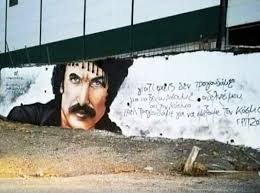
In 1816, the first Anogian to be initiated was George Vasiliou Manouras – or-Pirpyris(nickname). Other Anogeans who were initiated were: Vasilios Sbokos, Captain Manolis Dakanalis or Papadomanolis, Papa Michalis Skoulas or Xoppapas, Stavros Niotis, Stavros Xetrypis Vassilios Anagnostis Skoulas. Thus, the Anogians were among the first to take part in the Revolution of 1821. At the first opportunity, the Turks burned their village (in 1822) after fierce battles.
In May 1822, the Anogians defeated the Turks at the Sklavokabo Maleviziou site, led by Vassilis Sbokos. In July 1822, Serif Pasha started from Heraklion to Anogia and after approaching the town, set fire (July 14, 1822). Despite all the destruction of the Anogians, the Anogians did not stop fighting. In August of the same year, they again defeated Hasan Pasha at Sklavokabo. In 1826, a Turkish detachment started again from Heraklion, bound for Anogia.
Then, a group of Anogians led by several chieftains, among whom was the captain Manolis Dakanalis, started from Anogia, to prevent the Turks from approaching the village. The clash took place at Almyros river. The Anogians managed to repel them, but in a battle outside Heraklion the captain Manolis Dakanalis was killed. There is also a folk song about him, “The song of Manolis Dakanalis.
in Anogia, people order the razing of everything and the execution of every male Anogian, who is found inside the village and around it at a distance of one kilometer”. Chania 13-8-44 The General Commander of the Fortress of Crete H. MILLER. Thus, history was repeating itself for the third time. The whole village was burned to ashes, everything was destroyed.
As soon as the Anogians returned to their village and saw the sight, they got hurt, cried and began to mourn. Some have survived because their composers wrote them on a piece of paper a message and was enough to make them understand what was going to happen to them too.
One Sunday at rush hour when it was operating, the German insurgents and insurgents entered Anogeia as if they did not find them and beheaded the old men and women and children and burned them all. August Germanophile, murderer and Gestapo, you put a black life on enslaved Crete.
The mountains wear black and the old Psiloritis mourn Anogia, the village, the heroes of Crete.* Six thousand Germans surrounded Anogia and caught the leader and chased him away. They caught him in the village, but before they came out they fired at him and he flew like a bird. They killed Menelaus, the handsome boy, Manouras, the famous, the terrible lion.
The Germans all gathered in the army above and made the fire plan where they would set it. From Perahori they put the cannon and they burned the whole village from the east to the west. Finally, Anogia town managed to be reborn from the ashes and become an important town. Honorably, the community of Anogia was promoted to a municipality in 1947.
The previous year – 1946, on May 3 – the official state, recognizing the contribution of Anogeia, awarded the community the Military Cross 1st Class “for the disasters it suffered during the period of the four-year German occupation”. Talic Occupation of the inhabitants who demonstrated admirable conduct, unparalleled endurance and heroism to the point of self-sacrifice”.
Visit the local Churches and Monastery of Anogia
The following story from the residents about the building of the church is also preserved. A shepherd from Axos, one night saw a candle in the place where the church is today. He looked at this candle for 2-3 nights in a row and decided to see what was there. So he found the icon of the Saint and took it home. When he wanted to show it to his wife the other day, the icon was out of place. He found it where the candle was, took it back home, but it disappeared again.
This happened several times and so the shepherd understood that a church should be built at that spot in honor of the Saint, which was finally done.
Very close to Anii. The women’s monastery of Agios Nektarios also operates here In Anogia there are the churches of Agios Georgios, a fairly old church of two hundred years, of the Dormition of the Virgin in Perachori, which was built on the ruins of the old church of Agios Charalambos from the 12th century, of Agia Marina in Zomynthos, of Agios Nikitas in Makri of the Ascension of of Christ in Nida, of Agios Mamandos in Mythia, of Agios Fanourios in Peradolakia and of Agios Dimitrios in Metohi,
Diktaion Antron cave in Anogia community or Dikteon Andron

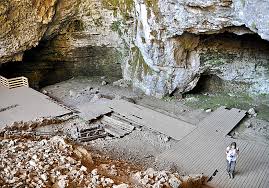

The great issue between Anogia and Vorizia for Psiloritis mountain
The Vorizians (south of Anogia) also claimed a share in Nida to graze their sheep. A dispute was thus created between the two villages and many times they came to fight. In 1870 the two «pasha» of Heraklion and Rethymno decided to put an end to the dispute between the two villages. When the pasades reached the plateau of Nida and made an autopsy, they decided to give ownership to the Vorizians on the grounds that Vorizia was closer to Nida.
But a priest, Papa Michael, who was tending his sheep there, heard the conversation and ran to alert the Anogians. The Anogians arrive on the plateau and rush against the Vorizians with stones and sticks. The Vorizians finally ask for peace on the condition that the Anogeans allow them to come to the plateau to sell flour and beans.
Songs and traditional Mantinades by Anogians

Another view holds that it means the myth of the animal. The third opinion holds that the word omithos is a pre-Greek. In Zomythos there is a spring, the water of which comes to Anogia. In the very old days, spring water was scarce. The shepherds who grazed their sheep around, watered them from a small “trough” they had built in front of the spring.
The whole area, even near Anogia, was covered by impenetrable forests. Near the spring was a large tree – aspen – that was there until 1915, when a strong wind uprooted it. This tree is remembered by the very old residents of Anogeia. In 1340 – according to the song of Manouras – a “therio” appeared in the area of Zominthos. What this beast was we don’t know, maybe it was some big snake. This beast was large with two heads and four eyes. About a kilometer away from the source, there is a large hole – Katsoura the Bull.
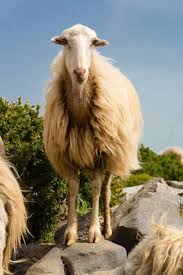
Besides that, the inhabitants were afraid to pass by. In other words, the beast had to be killed in order for the place to be quiet. Nikolaos Manouras was chosen, who as a reward would receive 300 sheep and the privilege of being the first to water his sheep. Manouras accepted the offer, takes the bow with his quiver and reaches Zominthos.
It changes the direction of the water, leaving the trough full. He pours vinegar and salt into the trough, to make the water tasteless, so that drinking it, the beast will be disgusted, raise its head to be able to hit it in a crucial point. So he climbed the aspen tree and waited for the beast. In a little while he actually arrives and before he can drink water he notices Manoura and opens his mouth to attack him.
Then Manouras finds the opportunity and marks the beast with his shuttlecock in its mouth. He achieved his goal and immediately the beast began to growl and thrash around the spring. His strength began to fail and he began slowly to go into hiding. But he could not reach his crypt, he fell on a cliff where he died. For a long time the shepherds saw the dead therio being eaten by the flies and since then the gorge got the name Chi migas the gorge.
How is Anogia village today
Nowadays, Anogia is a place where shepherds and locals live pleasantly. They managed to join tourism in the village and make businesses servicing tourists and locals. They are famous for being rough people and handsome. Nevertheless the village was burned 4 times by the Germans, they still have courage to invest and build in new places. Anogia is the place Loudovikos Anogion is born, famous Greek musician and ferry teller .
Anogia has many places to stay at for a night or for many days.

Buy some souvenirs-handmade from locals
The Anogeian women are famous for their handicrafts. They do handmade arts and sell to people, they mostly do useful handicrafts that are bought for use like woven or even wooden presents with meaning and use for your house.

Finally, we recommend Anogeia village for a day trip or for staying there in one of the villages resorts. The local hospitality is standard and the people ready to welcome you. The best way to visit the place is hiring a car, rent a car from Heraklion airport or from the area you stay and do visit this beautiful place, it is worth spending time over there!
